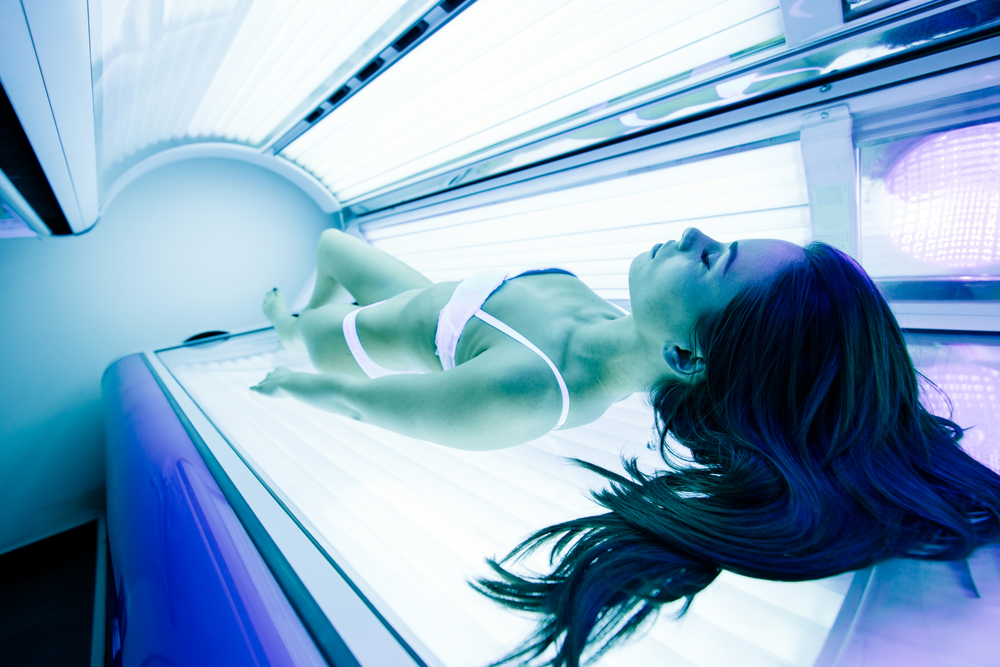 During the summer, beaches and tanning salons are filled with people looking to tan their skin. Many assume this is a safe activity, but skin tanning can expose you to multiple hazards. When ultraviolet rays reach unprotected skin, compounds called melanocytes are produced, which lead to a darker pigment on the skin. While tanning, these ultraviolet rays can cause sunburns, photoaging, skin cancer and eye damage. There is no safe way to tan, as sun exposure is inherently risky. Below are four risks of skin tanning along with general advice.
During the summer, beaches and tanning salons are filled with people looking to tan their skin. Many assume this is a safe activity, but skin tanning can expose you to multiple hazards. When ultraviolet rays reach unprotected skin, compounds called melanocytes are produced, which lead to a darker pigment on the skin. While tanning, these ultraviolet rays can cause sunburns, photoaging, skin cancer and eye damage. There is no safe way to tan, as sun exposure is inherently risky. Below are four risks of skin tanning along with general advice.
Sunburn:
Redness and peeling of the skin are the main symptoms of sunburn. The cause of sunburn is UV rays damaging the epidermis, which is the outer layer of skin. The immune system increases blood flow to this area, which leads to a reddened appearance. Sunburns should be treated with cool bathes, moisturizer, and a painkiller to reduce pain and swelling.
Photoaging:
Photoaging, also known as premature aging, is indicated by wrinkled skin and dark spots. It can also be indicated by appearance of thin blood vessels on the skin (telangiectasia) and rough, scaly patches on the skin (actinic keratosis). Unprotected sun exposure is the main cause of photoaging. UV rays break down the collagen and elastin fibers of the skin, which leads to wrinkles and an older appearance. Frequent sunburns or tanning sessions can lead to a permanent darkening of the skin. To treat photoaging, several options are available, such as chemical peels, microdermabrasion and skin fillers.
Skin cancer:
Melanoma and non-melanoma are the two main types of skin cancer. Melanoma is less common but more dangerous. This cancer forms in the epidermal cells that produce melanin. Early stages of melanoma are curable, however if the cancer spreads it becomes harder to treat and potentially fatal. Non-melanoma occurs in basal cells at the base of the epidermis. These develop in sun-exposed regions of the body such as the face, ears and hands. Treatment depends on the area and severity; consult a doctor for a treatment plan suitable to your condition.
Eye damage:
Eye damage, also known as photokeratitis, is damage to the cornea due to intense UV exposure. Sun tanning exposes the eyes to this risk, as well as artificial UV sources such as tanning lamps. Symptoms include tearing, pain, swollen eyelids, and hazy or weaker vision. If you display any of these symptoms, consult your doctor for a topical healing solution. The cornea typically heals in 24 to 48 hours, so the symptoms are not long-term.
Advice:
While tanning should be avoided, precautions should be taken if you choose to tan your skin. Always make sure you wear a broad spectrum sunscreen and avoid the sun between 10 am and 2pm. If you are using tanning equipment, make sure you visit a reputable facility and read the warning labels on the machine. Talk with the salon operator to determine the best length for your tanning session according to your skin’s needs. Do not exceed this limit. Wear the safety eyewear and report side effects to the salon operator. Remember that the less UV exposure, the better for your skin’s health.
Read our previous blog about the benefits of sunscreen here.







